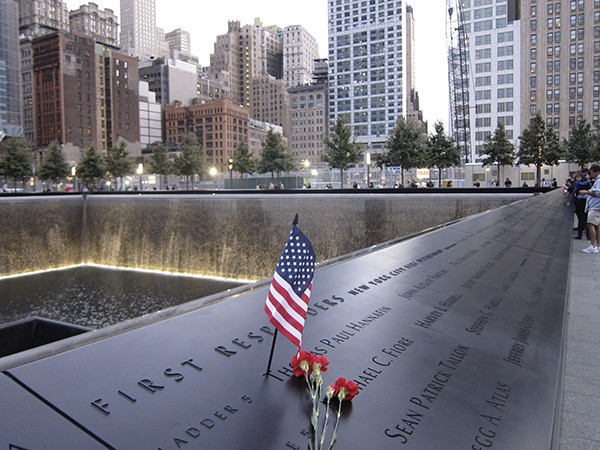Like most big cities, New York City buzzes with people rushing to get somewhere. That is if you are not a tourist lost on the corner of here and there like adventuresome husband and I were recently.
Navigating the beehive of this city is not the time for thoughtful reflection. Take for example Grand Central Station during rush hour where we found ourselves one evening. We retreated to one of the stair landings and watched in fascination while masses of people moved in formation as if participating in some sort of ritual.
The sheer number of people was far greater than the population of Sequim or for that matter Clallam County, which compelled me to offer silent homage to our peaceful village.
We worked to stay grounded, that is on our feet, when we returned to the swarm. We briefly considered trying the subway, but quickly realized that one or both of us could lose ground, fall and be trampled to death. We retreated to the nearest glass of wine.
Giants of Reflection
Away from industrious crowds, we had the time and space to look up and behold the marvelous architecture of skyscrapers that I came to see as the giants of the city. The history and ironies of NYC are written across these edifices of stone and glass.
Once we started taking photos of buildings unique and symbolic of their time, we couldn’t stop – they are indeed majestic. My personal favorites were buildings like the Chrysler and Rockefeller buildings. Stunning designs featuring art deco throughout the façade and interior of these and other buildings reigned from 1925 to the late 1930s.
Ironically, these edifices of wealth rose in defiance of the great market crash that occurred before some were occupied and beamed off the fractured glass of art deco design throughout the great economic depression.
Lonely symbol of survival
In another part of the city close to the 9/11 memorial, a newer modern building appropriately appears ghostlike in the distance; its façade so mirror-like that the edges of the building seemed to hold a piece of the sky instead of a building. A closer view offered little more sense of identity as it simply mirrored the neighboring buildings and showed none of its inner core.
In contrast, the new World Trade Center rises to demand reflection. The façade as far up as I could see consisted of long vertical pieces of reflecting material each uniting with an equal piece to form a three dimensional triangle that picked up light from all directions as if to say look out and look in.
Nearby, water flows into the two vast empty footprints of the original towers. The only surrounds are the waist-high walls with the deeply etched names of those who perished. Near the south footprint stands the lone survivor, a tree that somehow withstood the great building imploding a few yards away. The tree has become a cherished symbol of survival and resilience, a symbol of our search for the struggle and will to live in the most devastating of times. It is more impactful than the buildings of all times.
All the rubble is gone now, some of it traveling as far as Port Angeles and Sequim. Sequim’s new Civic Center features a small memorial hosting a burnt piece of beam from one of the fallen World Trade Center towers.
I will see it soon and recall the 9/11 Memorial we saw in NYC with all the people milling around water falling into vast emptiness. Most of us came to touch this scene in some way if only to believe the incomprehensible cataclysmic destruction at the hands of cunning people who sought to destroy the ultimate symbol of our wealth.
The NYC Police bagpipers play patriotic and solemn music; few can contain their tears, we among them. Maybe it’s just me but the 9/11 Memorial feels like an open wound that won’t heal. We can’t seem to find meaning. It is too big to rationalize and too sad to put away in a memory box.
We best remember and keep reflecting on it if only to find hope in the lone survivor tree. And now, we have our own piece to touch and reflect upon here in Sequim.
Bertha D. Cooper is retired from a 40-plus year career as a health care administrator focusing on the delivery system as a whole. She still does occasional consulting. She is a featured columnist at the Sequim Gazette. Reach her at columnists@sequimgazette.com.


